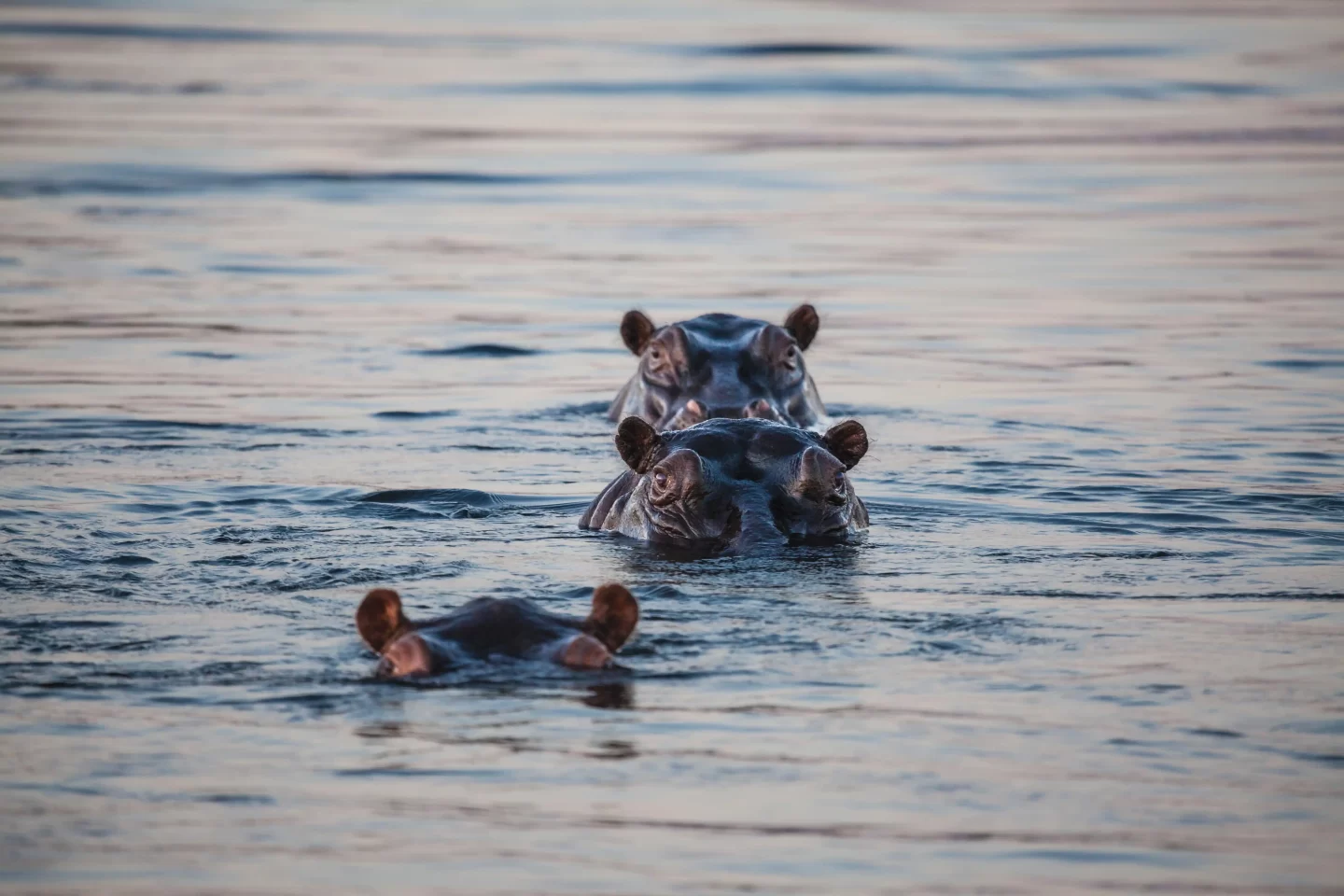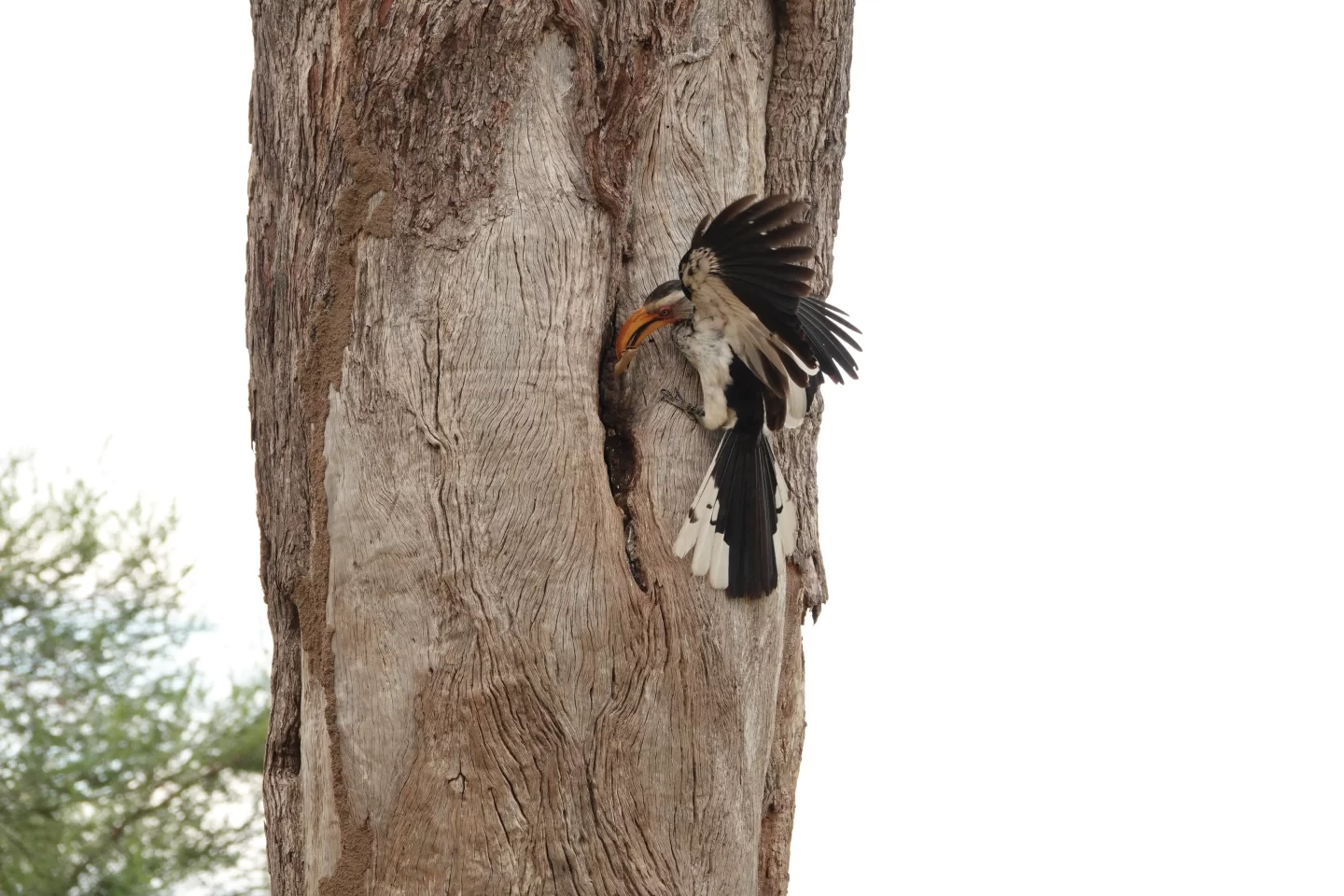

Go slow on the banks of Four Rivers
Text Riéth van Schalkwyk
Photographs Louis Wessels
From the Autumn 2022 issue
You may not be a tree lover or a birder. You may not even like camping or road-tripping. Days at a waterhole when the monotony of yet another gemsbok or springbok or zebra coming to drink may bore you to tears, and the thought of the foggy coast and the sound of crashing waves, the boring conversations of fishing trips and the catch of the day makes you wonder where else in Namibia a more exciting adventure could be waiting. Rièth van Schalkwyk followed the whim of a family member to break the tradition of Christmas at the seaside, packed the camper for two weeks of slow travel and camped on the banks of the Kavango, Zambezi, Chobe and Kwando to discover the magic of looking closer and staying longer.
Summer in Namibia is hot and dry. That is, in years when the rains are late or, even worse, fail to come. The end of 2021 was such a summer. The sky blue and bright, or hazy because of veld fires and strong winds. The veld colourless except for Shepherds trees edged against an ugly charcoal hue over last stretches of burnt land.
Come December, the collective trek usually heads westwards for a cool respite at the coast to escape the inland heat and drought. We decided to travel north instead. To find water and, if not so much the greenery, at least returning summer birds and flowering trees. By a stroke of luck or idiocy on the part of the colonial powers the water-rich north-east became part of Namibia. And how lucky that is. Called Caprivi for over a hundred years, but changed to Zambezi Region in late 2013 as if to claim it as our birth right, this is the only part of Namibia that is always wet, that always has abundant water even in the driest of dry periods. Two mighty rivers connect us to our four neighbours and provide fertile land for an abundance of trees to grow lush and high, providing different biomes to the rest of Namibia.
From around our campfires on a riverbank under the dark moon and starry night skies, we could see fires burning across the water or the flood plains and hear the drums of rituals – in another country. This fascinating piece of our land is a corridor for elephants criss-crossing between Angola, Zambia and Botswana. Zebras migrate in huge numbers in summer and although buffaloes are not in as big a hurry as in the Serengeti, they also move about and stay long enough for us to observe them close-up on the flood plains or in the woodlands. The Carmine Bee-eaters return to their nests in the banks of the Zambezi near Katima in early summer, but when you arrive too late in December they may have left already.
Our journey started in mid-December. As we approached Grootfontein along the B8, the clouds were building. Upon reaching the Mangetti the promise of rain was real as the first showers moved our way. The Silver Cluster Leaf trees are so abundant along the tarred road and their shape is so recognisable that once you know their name, they are easy to identify. With Helga Burger’s Unbearable Beauty of Trees on my lap it was impossible not to be mesmerized by the parade we passed. For the time being, ignore the other seasons in the book. Just keep it open at Summer and stop when you see the first flowering tree. Pick a flower. Once seen, you will never fail to recognise a Raintree, Zambezi Teak, White Bauhinia or Thorny Teak. There are so many species and all of them have such exquisite flowers that when you study them close-up you will forever remember them. So much so that halfway through the journey you will notice the not so obvious trees with smaller flowers or those that have given their best show a week or two earlier, like the Peeling Bark Ochna or the Sand Camwood.
Nothing gave me more pleasure than finding the split-open fruit of a Natal Mahogany on the banks of the Chobe. So perfectly designed in black and red. Not to mention the fruit of the Pod Mahogany on the Kwando – its identical red and black beads in a fitting little shell. To discover the magic of identifying a tree by its form or its bark, like the False Mopane, the Mangetti or the Knob Thorn or Marula is exhilarating. With its pretty pink and yellow lantern-like flowers the Sickle Bush certainly looks like a Kalahari Christmas tree. The beautiful Jackal Berry does not need flowers to attract attention. These trees are truly impressive – tall, green and lush with the most beautiful trunk and bark. Perfectly posed at a picnic spot in the Mahango.
Slow camping is a must in the north-east. Who can leave when the birds are so obliging at every camping site along every river? When a cruise on each one of the four rivers – even when the tiger fish don’t play along – is an adventure in itself? The skipper knows his turf. When the rivers are too low to navigate safely even in a canoe, join a guided drive on the flood plains. Guides do that every day. They know where to find a special breeding site or whether there is a chance of seeing a lifer you have missed so far. They also know when hippos are too close for comfort. They love to share their knowledge. Even if you think you know everything there is to know about birds and their habits, skippers and guides may surprise you with more interesting facts. How deep into Zambia did we have to travel to see just the back of a sitatunga! On the Kwando we had the privilege of looking them in the eye more than once.

In the reeds lining the canal, serious birders in our group were treated to a rare sighting of an Allen’s Gallinule in perfect light posing for the perfect photograph. On the same trip a Lesser Jacana showed itself. The least interested birder would be tempted to become a bit more serious while travelling in this part of Namibia. It is just so easy. Who would not be excited to witness a Hornbill feeding chicks through a hole in a tree trunk covered up in mud with just a sliver of an opening to pass the food through?
One may not be at the right spot at the right time to see elephants crossing. But to stand on a platform in the river with your fishing rod in the water at sunrise or sunset must provide about the most romantic setting for anybody with a camera. Even if the early morning excursion on the water is more rewarding for birders than the anglers, the outing is worth every hour and the tiger fish will eventually succumb. You may be fortunate to spot cheetahs under a Mopane bush feasting on prey, or as we were, a lioness in the Buffalo area and two young leopards. A wild dog en route to Mudumu or a lion kill on the Botswana side of the Chobe River.
As a wise man once said, “don’t talk about the weather”. If it rains in mid-summer, as it normally does in the north-east, the days are warm, and humid. The rainstorms usually start in the afternoon, followed by crisp, cool mornings.
A truly wonderful fact about camping sites along these rivers is that they are mostly right on the riverbank. Not hidden away in the second or third row behind chalets blocking the view. Abundant water means that most camping sites have lawns sturdy enough to camp on. Spending hours with your binoculars, a cup of tea and a book on your lap watching the tranquil flow of the river, is about as good as it gets. Except if you are one of those who need to explore. Put up camp for a few days in one place on the Okavango and drive in a different direction every day. Visit Popa Falls, the Buffalo Core Area and Mahango Game Park, a San village and a craft outlet. Camp on the Kwando and visit Mudumu and Mamili, the Kongola Craft Centre and the Traditional Village on the D……? The same applies to camping on the Zambezi and Chobe. So much to see and do and enough time for all of it.
And so the days go by. When you cross the checkpoint at Divundu going back south again, and you do not have that satisfied feeling of having made a giant leap in your knowledge of birds, trees, animal behaviour, having read a few books and taken thousands of photographs to keep you busy sorting for weeks… turn back. The holiday need not be over.




